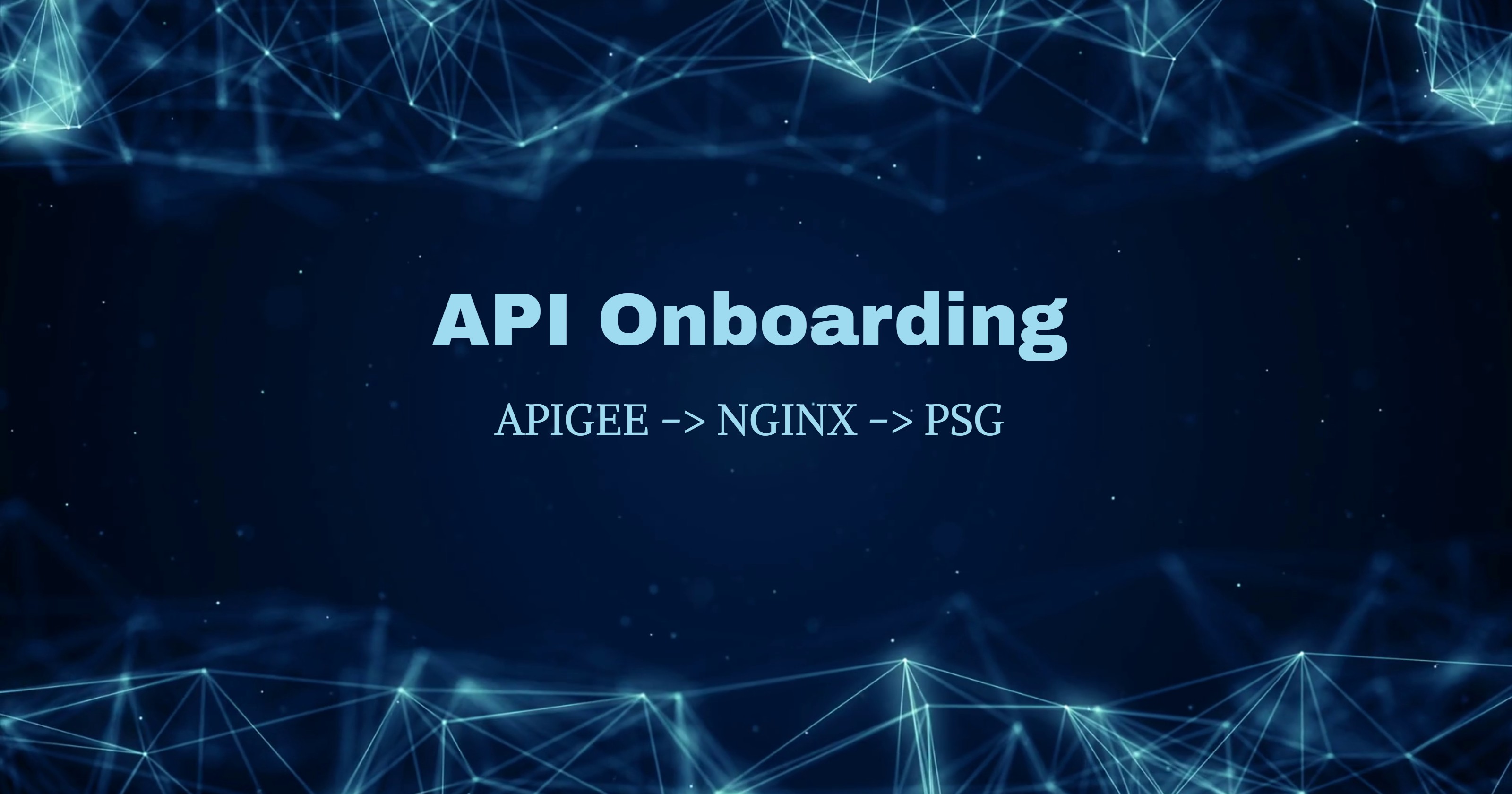API Onboarding with Apigee, NGINX, and PSG
 Nainaz
Nainaz
Understanding the Flow of API Onboarding with Apigee, NGINX, and PSG
In the world of modern application development, APIs play a crucial role in connecting services, enabling communication, and providing data to various clients. When onboarding APIs, enterprises often leverage multiple layers of technology to ensure seamless API management, security, performance, and connectivity. A common approach involves integrating Apigee, NGINX, and PSG (Private Service Connect Gateway or similar services). Let’s break down how each of these components fits into the overall flow and why they’re essential.
1. Apigee - The API Gateway and Management Layer
Apigee is a powerful API management platform that handles everything from security enforcement to traffic routing and analytics. When an organization starts onboarding APIs, Apigee typically becomes the first touchpoint for any client requests.
Key Functions:
API Proxying: Apigee acts as the gateway, proxying requests and protecting backend services.
Policy Enforcement: It can enforce security policies (like OAuth, JWT), rate limiting, quota management, and traffic throttling.
Transformation and Orchestration: Apigee can transform request/response formats and even orchestrate calls to multiple services.
Flow Explanation: When a client sends a request, Apigee intercepts it, applies relevant policies, and forwards the request to the next layer, which in many cases is NGINX.
2. NGINX - The Load Balancer and Reverse Proxy
NGINX is a widely used web server that doubles as a high-performance load balancer and reverse proxy. After Apigee processes an API request, it often hands off the request to NGINX for further routing and load balancing across multiple backend instances.
Key Functions:
Load Balancing: Distributes incoming requests evenly across multiple backend servers to ensure high availability and optimal performance.
Reverse Proxying: Routes traffic to appropriate backend services based on the request type, URL, or other criteria.
SSL Termination and Caching: Handles SSL encryption/decryption and can cache responses to improve performance.
Flow Explanation: Once the request is routed through Apigee, NGINX ensures it reaches the correct backend service, possibly balancing traffic across multiple instances. It may also handle performance optimizations like caching, or even additional security filtering.
3. PSG (Private Service Connect Gateway) - Ensuring Secure Connectivity
PSG, such as Google Cloud’s Private Service Connect, provides secure and private connectivity between services, often within a cloud environment. In this setup, after passing through NGINX, the request might traverse a PSG layer to reach backend services securely.
Key Functions:
Private Network Connectivity: PSG enables private communication between services without exposing traffic to the public internet.
Latency and Security Improvements: By keeping traffic within a private network, PSG reduces latency and enhances security, especially for sensitive data.
Simplified Network Architecture: PSG provides a direct and private link between virtual networks, making it easier to manage secure communications within cloud environments.
Flow Explanation: NGINX forwards the traffic through PSG, ensuring that sensitive data stays within a private, secure network. This keeps latency low and maintains compliance with data security requirements.
How It All Comes Together: The Complete API Onboarding Flow
Client Request → Apigee: The client sends an API request, which Apigee intercepts and processes. Apigee applies security policies, manages traffic, and routes the request based on predefined logic.
Apigee → NGINX: Apigee forwards the request to NGINX, which handles load balancing and routes the traffic to the correct backend service.
NGINX → PSG: NGINX sends the traffic through PSG (Private Service Connect Gateway), ensuring secure, low-latency communication to the final backend service.
Why Use All Three Components?
Apigee provides comprehensive API management, ensuring security, analytics, and scalability.
NGINX adds performance optimizations like load balancing, caching, and flexible routing for backend services.
PSG secures the network, allowing services to communicate privately within the cloud without exposing traffic to the public internet.
Conclusion
By integrating Apigee, NGINX, and PSG in your API onboarding process, you can build a robust, scalable, and secure API architecture. Each layer has a specific role, allowing your APIs to handle complex use cases while maintaining high performance and security standards. Whether you’re onboarding APIs for internal use or exposing them to external clients, this multi-layered approach ensures your APIs are both powerful and protected.
Subscribe to my newsletter
Read articles from Nainaz directly inside your inbox. Subscribe to the newsletter, and don't miss out.
Written by
